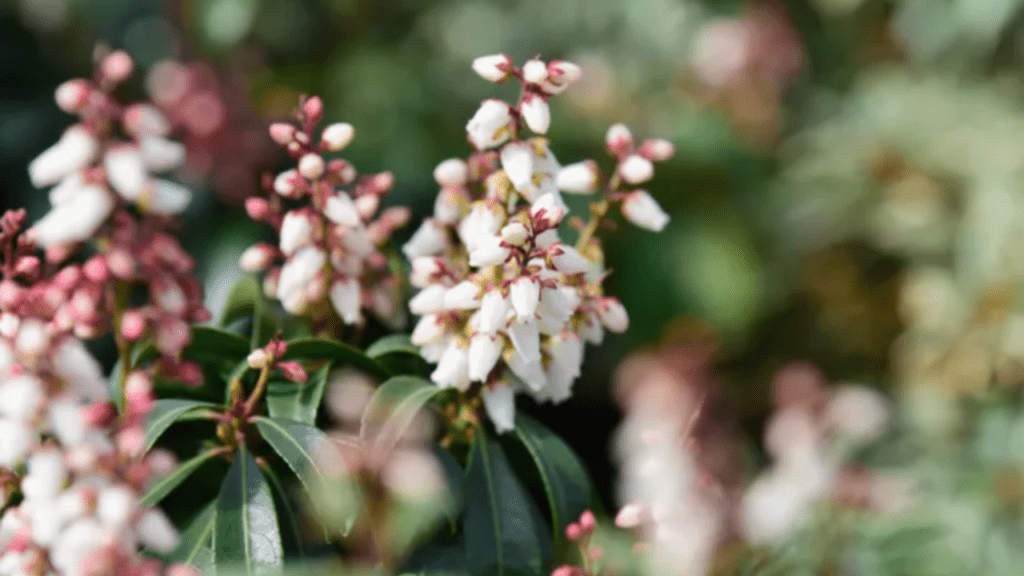
Andromeda Plant: Ultimate Care Guide for Gardeners
The Andromeda plant, also known as Pieris Japonica, is a beautiful and versatile shrub that can add a touch of elegance to any garden. In this post, we’ll provide you with a comprehensive care guide for this stunning plant, covering everything from watering and sunlight to soil and pruning. Whether you’re a seasoned gardener or just starting out, this guide will help you keep your Andromeda plant thriving and looking its best. So let’s dive in and learn how to care for this ultimate garden beauty.
Table of Contents
ToggleOverview of the Andromeda Plant
Botanical name and classification.
The Andromeda plant, also known as Pieris Japonica, is a member of the Ericaceae family and is native to East Asia. It is a versatile and beautiful shrub that is highly valued for its stunning foliage and delicate flowers. The botanical name, Pieris Japonica, comes from the Greek mythology figure, Pieris, who was transformed into a bird by the gods.
In terms of classification, the Andromeda plant is classified as an evergreen shrub and is known for its ability to thrive in acidic soils. It is a popular choice for gardens and landscaping due to its attractive appearance and low maintenance requirements.
Overall, the Andromeda plant is a valuable addition to any garden, and with the right care and attention, it can thrive and enhance the beauty of its surroundings.
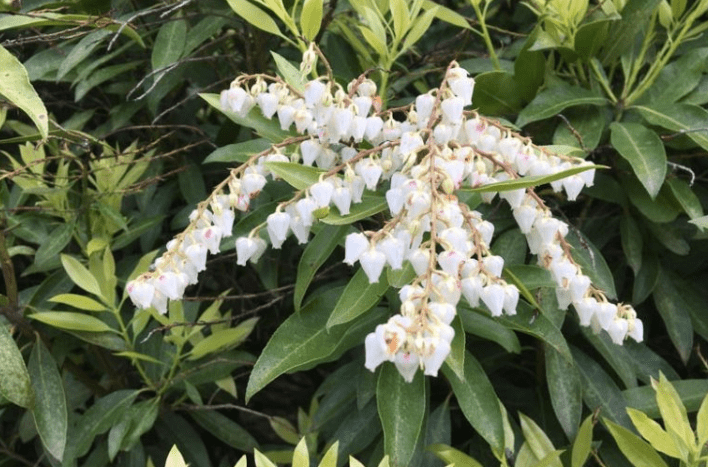
Origin and natural habitat.
The Andromeda plant, also known as Pieris Japonica, is native to East Asia, specifically in regions such as Japan, Taiwan, and Eastern China. It thrives in its natural habitat of acidic, well-drained soils in wooded areas and mountain slopes. The plant is well adapted to the cool, temperate climates of these regions and can be found growing in shaded areas with moderate moisture levels. Its natural habitat provides the ideal conditions for the Andromeda plant to flourish, with its striking foliage and delicate flowers adding to the beauty of the landscape. Its origin and natural habitat play a significant role in shaping the plant’s characteristics and requirements for care, making it important for anyone looking to cultivate the Andromeda plant to consider these factors.
Common names and varieties.
The Andromeda plant, also known as Pieris Japonica, is a beautiful and valuable addition to any garden. It is native to East Asia, specifically in regions such as Japan, Taiwan, and Eastern China. In its natural habitat, the Andromeda plant thrives in acidic, well-drained soils in wooded areas and mountain slopes. It is well adapted to the cool, temperate climates of these regions and can be found growing in shaded areas with moderate moisture levels. The plant’s origin and natural habitat play a significant role in shaping its characteristics and care requirements. There are several common names and varieties of the Andromeda plant, such as Japanese andromeda, Lily of the Valley shrub, and mountain pieris. These varieties may have slight differences in foliage, flower color, and growth habits, but they all share the same elegant and striking beauty that makes the Andromeda plant a sought-after addition to gardens. With the right care and attention, the Andromeda plant can thrive and enhance the beauty of its surroundings.
Physical Characteristics
Description of leaves, flowers, and overall appearance.
The Andromeda plant is native to East Asia, particularly in regions like Japan, Taiwan, and Eastern China. It is well-suited to the cool, temperate climates of these areas and thrives in acidic, well-drained soils in wooded areas and mountain slopes with moderate moisture levels. The plant has several common names and varieties, including Japanese andromeda, Lily of the Valley shrub, and mountain pieris, each with slight variations in foliage, flower color, and growth habits. The Andromeda plant is known for its elegant and striking beauty, making it a sought-after addition to gardens. It features small, leathery leaves and clusters of white or pink bell-shaped flowers that bloom in spring, adding a beautiful touch to its surroundings. With the right care and attention, the Andromeda plant can thrive and enhance the beauty of its surroundings.
Seasonal changes in the plant’s appearance.
The Andromeda plant is known for its striking beauty and unique appearance, with small, leathery leaves and clusters of white or pink bell-shaped flowers that bloom in the spring. This plant is native to East Asia, particularly in regions like Japan, Taiwan, and Eastern China, where it thrives in cool, temperate climates and acidic, well-drained soils. The Andromeda plant has several common names and varieties, including Japanese andromeda, Lily of the Valley shrub, and mountain pieris, each with slight variations in foliage, flower color, and growth habits. As the seasons change, the Andromeda plant undergoes various transformations in its appearance, from the vibrant blooms of spring to the rich green foliage of summer and the fiery autumn colors. It is a beautiful and sought-after addition to gardens, adding an elegant touch to its surroundings with the right care and attention to thrive and enhance the beauty of its environment.
Growth patterns and mature size.
The Andromeda plant is a beautiful and unique addition to any garden or landscape. With the right care and attention, it can thrive and enhance the beauty of its surroundings. The plant is known for its striking appearance, with small, leathery leaves and clusters of white or pink bell-shaped flowers that bloom in the spring. It is native to East Asia, particularly in regions like Japan, Taiwan, and Eastern China, where it thrives in cool, temperate climates and acidic, well-drained soils.
The Andromeda plant has several common names and varieties, including Japanese andromeda, Lily of the Valley shrub, and mountain pieris, each with slight variations in foliage, flower color, and growth habits. As the seasons change, the Andromeda plant undergoes various transformations in its appearance, from the vibrant blooms of spring to the rich green foliage of summer and the fiery autumn colors. It is a beautiful and sought-after addition to gardens, adding an elegant touch to its surroundings.
When caring for the Andromeda plant, it is important to consider its growth patterns and mature size. This plant can grow to be quite large, so it is important to give it plenty of space to spread out. It prefers well-drained, acidic soil and partial shade, making it an ideal choice for woodland gardens or shaded areas. Regular pruning can help to maintain its shape and encourage healthy growth.
Overall, the Andromeda plant is a stunning and versatile addition to any garden, and with the right care and attention, it can thrive and enhance the beauty of its surroundings.
Benefits of the Andromeda Plant
Aesthetic appeal and landscaping uses.
The Andromeda plant is a versatile and beautiful addition to any garden. Its vibrant blooms in spring, rich green foliage in summer, and fiery autumn colors make it a sought-after plant for adding an elegant touch to its surroundings. When caring for the Andromeda plant, it’s important to consider its growth patterns and mature size. With the right care and attention, it can thrive and enhance the beauty of its surroundings. It prefers well-drained, acidic soil and partial shade, making it an ideal choice for woodland gardens or shaded areas. Regular pruning can help to maintain its shape and encourage healthy growth. Overall, the Andromeda plant is a stunning and versatile addition to any garden, and with the right care and attention, it can thrive and enhance the beauty of its surroundings. Whether you’re looking to add aesthetic appeal to your garden or enhance your landscaping, the Andromeda plant is an excellent choice.
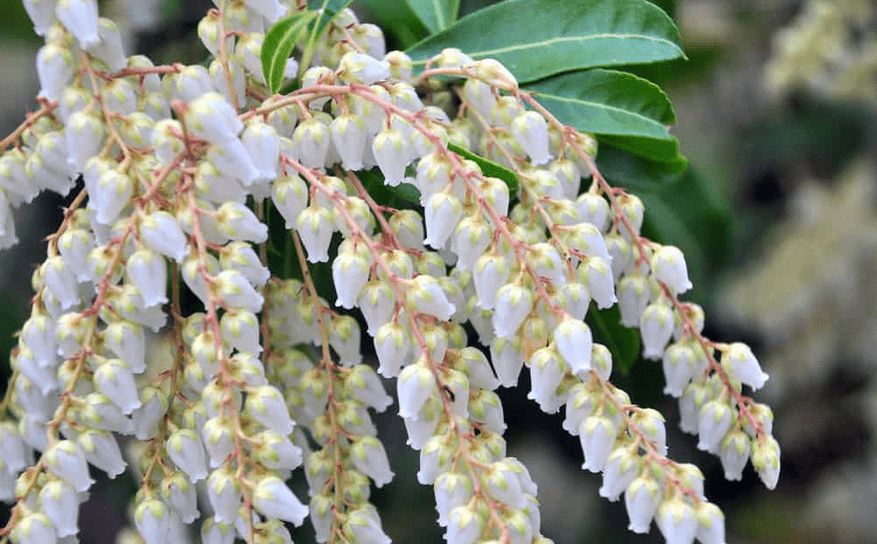
Attracting wildlife such as bees and butterflies.
The Andromeda plant is a beautiful and versatile addition to any garden. Its vibrant blooms in spring, rich green foliage in summer, and fiery autumn colors make it a sought-after plant for adding an elegant touch to its surroundings. When caring for the Andromeda plant, it’s important to consider its growth patterns and mature size. With the right care and attention, it can thrive and enhance the beauty of its surroundings. It prefers well-drained, acidic soil and partial shade, making it an ideal choice for woodland gardens or shaded areas. Regular pruning can help to maintain its shape and encourage healthy growth. Overall, the Andromeda plant is a stunning and versatile addition to any garden, and with the right care and attention, it can thrive and enhance the beauty of its surroundings. Whether you’re looking to add aesthetic appeal to your garden or enhance your landscaping, the Andromeda plant is an excellent choice. Plus, its vibrant blooms and foliage are known for attracting wildlife such as bees and butterflies, making it a great choice for anyone looking to create a vibrant and diverse garden ecosystem.
Planting the Andromeda Plant
Best time to plant (seasonality).
The best time to plant the Andromeda plant is in the early spring or fall. Planting in the spring allows the plant to establish its roots before the heat of summer, while planting in the fall gives it time to acclimate before the winter months. It’s important to choose a location with well-drained, acidic soil and partial shade to ensure the plant’s success. When planting, be sure to water the plant thoroughly and provide regular irrigation until it is established. With proper care and attention, the Andromeda plant can thrive and add beauty to any garden or landscaping.
Ideal soil conditions and preparation.
The Andromeda plant is a beautiful addition to any garden, with vibrant blooms and foliage that attract wildlife such as bees and butterflies. When planting the Andromeda plant, it is important to choose the right time of year. The best time to plant is in the early spring or fall, allowing the plant to establish its roots before the heat of summer or the cold of winter. It is important to choose a location with well-drained, acidic soil and partial shade to ensure the plant’s success. When planting, be sure to water the plant thoroughly and provide regular irrigation until it is established. It is also important to prepare the soil by adding organic matter and fertilizer to promote healthy growth. With the right soil conditions and proper preparation, the Andromeda plant can thrive and add beauty to any garden or landscaping.
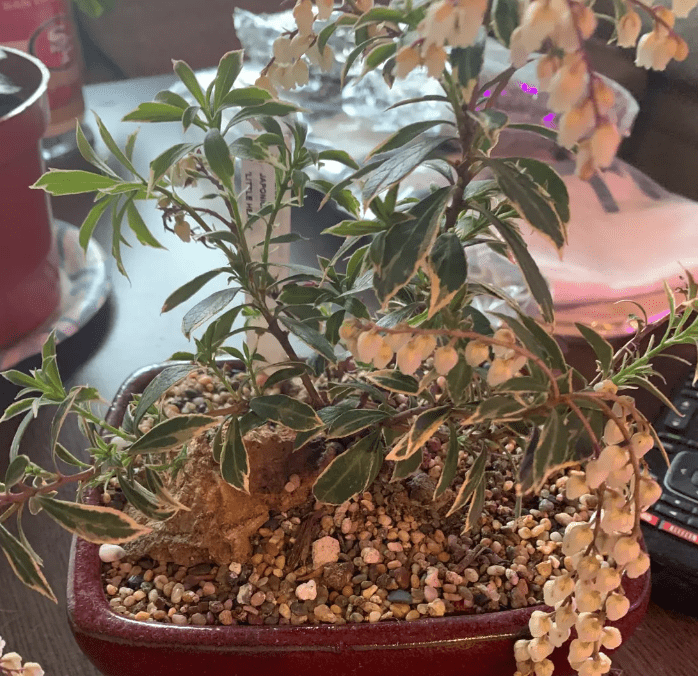
Planting techniques and spacing requirements.
When planting the Andromeda plant, it is important to follow proper planting techniques and spacing requirements. The Andromeda plant should be planted in well-drained, acidic soil and in a location that receives partial shade. It is best to plant the Andromeda in the early spring or fall to allow the plant to establish its roots before extreme temperatures. When planting, be sure to water the plant thoroughly and provide regular irrigation until it is established. It is also important to prepare the soil by adding organic matter and fertilizer to promote healthy growth. Proper spacing is important to ensure that the Andromeda plant has enough room to grow and thrive. Follow the recommended spacing requirements to give the plant the best chance for success. With the right planting techniques and spacing requirements, the Andromeda plant can flourish and enhance the beauty of any garden or landscaping.
Care and Maintenance
Watering requirements and techniques.
Andromeda plants have specific watering requirements and techniques to ensure their proper growth and health. When it comes to watering, it is important to water the Andromeda plant thoroughly after planting and provide regular irrigation until it is established. It is essential to keep the soil consistently moist but not waterlogged. During periods of hot, dry weather, be sure to water the plant deeply to reach the roots. However, it is important not to overwater, as this can lead to root rot and other issues.
In terms of watering techniques, it is best to water the Andromeda plant at the base, rather than from overhead, to prevent fungal diseases and promote deep root growth. Using a soaker hose or drip irrigation system can also help ensure that the plant receives the right amount of water without wastage.
It is important to monitor the soil moisture levels and adjust the watering schedule as needed based on the weather and environmental conditions. By following the proper watering requirements and techniques, you can help the Andromeda plant thrive and stay healthy.
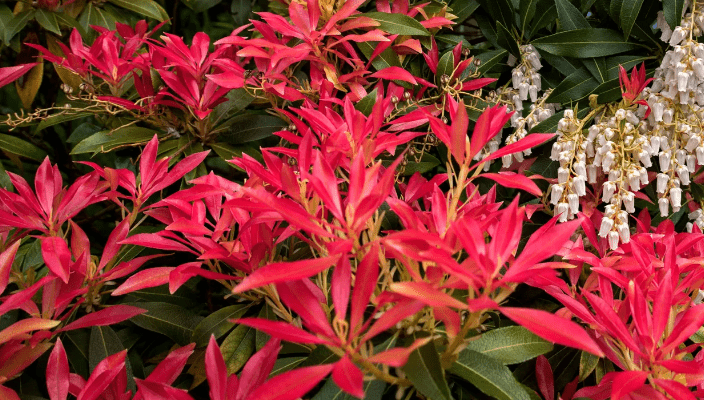
Fertilization schedules and types of fertilizers.
When it comes to fertilizing your plants, it is important to follow a regular schedule to ensure they receive the necessary nutrients for growth and health. Different types of fertilizers can be used, such as organic or synthetic options, and it is important to choose the right type based on your specific plant’s needs. When fertilizing, it is important to follow the recommended guidelines for application rates and frequency to avoid over-fertilization, which can harm the plant. It is also important to consider the timing of fertilization, as certain plants may have specific growing seasons where they require more nutrients. By understanding the fertilization needs of your plants and following a proper schedule with the right type of fertilizer, you can help promote healthy growth and vibrant blooms.
Pruning guidelines and timing.
Pruning is an important aspect of plant care and can greatly impact the health and appearance of your plants. It is important to follow proper guidelines and timing when it comes to pruning your plants. Pruning at the right time of year can help promote healthy growth and flowering, as well as improve the overall structure and appearance of the plant. Different plants may require different pruning schedules, so it is important to research and understand the specific needs of your plant. Additionally, it is important to use the proper tools and techniques when pruning to avoid causing damage to the plant. By following the proper pruning guidelines and timing, you can help your plants thrive and maintain their health and beauty.
Common pests and diseases, and how to manage them.
Common pests and diseases can be a major issue for gardeners and can greatly affect the health and appearance of your plants. It is important to be proactive in managing and preventing pests and diseases to keep your plants healthy. Regularly inspecting your plants for signs of pests or diseases is key to catching and addressing any issues early on. There are many natural and chemical methods available to manage pests and diseases, so it is important to research and choose the best option for your specific situation. Additionally, practicing good garden hygiene, such as removing dead or diseased plant material, can help prevent the spread of pests and diseases. It is also important to properly water and fertilize your plants to keep them healthy and strong, making them more resistant to pests and diseases. By actively managing and preventing pests and diseases, you can help your plants thrive and grow beautifully.
Propagation Methods
Seed propagation.
There are several methods of seed propagation that gardeners can use to grow new plants. One common method is to start seeds indoors in small containers before transplanting them into the garden. This allows the seeds to germinate and grow in a controlled environment before being exposed to the outdoor elements. Another method is direct seeding, where seeds are planted directly into the soil in the garden. This method is often used for plants that do not transplant well or that prefer to grow directly in the ground. Some seeds may require special treatment before planting, such as scarification or stratification, to help them germinate. It is important to research the specific needs of the seeds you are working with to ensure successful propagation. Overall, seed propagation is a cost-effective and rewarding way to grow new plants, and it allows gardeners to have a greater variety of plants in their garden.
Cuttings and layering techniques.
Cuttings and layering are two popular methods of plant propagation. With cuttings, a portion of a plant – usually a stem or leaf – is cut from the parent plant and then placed in soil or water to develop its own roots. This is a great way to produce genetically identical plants and is commonly used for herbs, houseplants, and woody ornamentals. Layering, on the other hand, involves encouraging a stem to produce roots while it is still attached to the parent plant. This can be achieved by burying a portion of the stem or simply bending a low-growing stem to the ground. Once roots have formed, the new plant can be separated from the parent. Both methods can be used to propagate new plants from existing ones, and they are particularly useful for maintaining the characteristics of a specific cultivar. Overall, cuttings and layering are simple and effective techniques for expanding your garden without having to purchase new plants.
Landscaping with Andromeda Plants
Andromeda plants are a great addition to any landscape, and there are several ways to propagate them to expand your garden. One effective method is using cuttings, where a portion of the plant is cut and placed in soil or water to develop its own roots. This is commonly used for herbs, houseplants, and woody ornamentals. Another method is layering, where a stem is encouraged to produce roots while still attached to the parent plant. Once roots have formed, the new plant can be separated. Both of these techniques are great for maintaining the characteristics of a specific cultivar and are a simple and effective way to expand your garden without having to purchase new plants. Overall, Andromeda plants are a wonderful addition to any landscape and can be easily propagated using these methods.
Seasonal Care Tip
Andromeda plants are a great addition to any landscape, and there are several ways to propagate them to expand your garden. One effective method is using cuttings, where a portion of the plant is cut and placed in soil or water to develop its own roots. This is commonly used for herbs, houseplants, and woody ornamentals. Another method is layering, where a stem is encouraged to produce roots while still attached to the parent plant. Once roots have formed, the new plant can be separated. Both of these techniques are great for maintaining the characteristics of a specific cultivar and are a simple and effective way to expand your garden without having to purchase new plants. Overall, Andromeda plants are a wonderful addition to any landscape and can be easily propagated using these methods.
In conclusion, caring for an Andromeda plant requires attention to detail and regular maintenance. By following the tips and advice in this guide, you can ensure that your Andromeda plant stays healthy and vibrant. Remember to water it regularly, provide it with the right amount of sunlight, and prune it as needed to promote growth. With the proper care, your Andromeda plant can be a beautiful addition to your garden.
Frequently asked questions And Answer
The Andromeda plant, also known as Pieris japonica, is a beautiful evergreen shrub that produces drooping clusters of white, pink, or red flowers in the spring.
The Andromeda plant thrives in well-drained, acidic soil and prefers partial shade to full sun. It is best to plant it in the spring or fall and provide plenty of space for it to grow.
The Andromeda plant prefers moist soil, so it is important to water it regularly, especially during dry periods. However, be careful not to overwater, as it can lead to root rot.
It is beneficial to fertilize the Andromeda plant in the spring with a slow-release, acid-based fertilizer. Be sure to follow the instructions on the fertilizer package for the best results.
Pruning the Andromeda plant is best done after it has finished flowering in the spring. Remove any dead or damaged branches and shape the plant as desired. Avoid heavy pruning, as it can affect the next season’s flowering.
The Andromeda plant is generally resistant to pests and diseases, but it can be susceptible to lace bugs and powdery mildew. Keep an eye out for any signs of infestation and treat accordingly.
Yes, the Andromeda plant can be grown in containers, but be sure to use a well-draining potting mix and provide regular watering and fertilizing.
The Andromeda plant pairs well with other acid-loving plants such as azaleas, rhododendrons, and camellias. It also complements ferns, hellebores, and Japanese maples in a garden setting.
